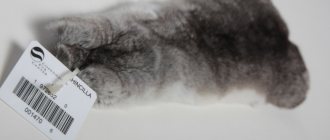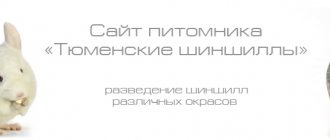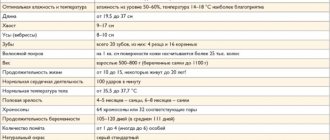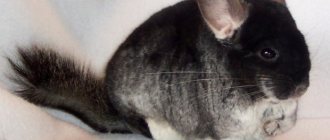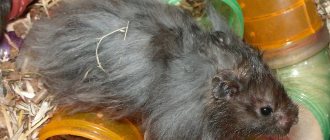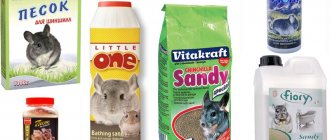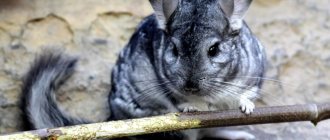Every owner of a chinchilla as a pet should know about the need to periodically bathe the animal. sand for chinchillas is collected in a bath or other container .
sand for chinchillas
Using any liquid for this process may harm your pet's health. This is due to the high density of the fur, which is why it dries slowly. The result is the creation of a favorable environment for pests and even decay, which can lead to the death of the pet.
Types and features of sand composition
You need to know that not every sand is suitable for bathing a chinchilla, since they may have quite large particles that can only harm the animal. Therefore, it is best to use a special one - volcanic. Its main feature is that the particles are more like dust, capable of absorbing excess moisture and do not harm the animal’s fur at all.
Volcanic sand includes:
- Sepiolite. It has a porous structure. It has excellent hydrophilicity and therefore absorbs moisture well.
- Talkomagesite, like sepiolite, is porous, thanks to which it perfectly absorbs moisture and fats, and this is very important for chinchillas.
- Zeolite. It also absorbs moisture. Since it is very dusty, it must be diluted with ordinary sand, but only of a fine fraction.
As we can see, they are all very similar in their properties, so this is the best option for bathing your pet.
What is sand for?
Chinchillas need sand for bathing. Water procedures are strictly contraindicated for these animals. Under natural conditions, the animals live in the desert part of the Andes, located high above sea level, so in the process of evolution they have adapted to carry out hygienic procedures without water, since the climate in those parts is arid and rains are very rare.
Over time, chinchillas' sebaceous glands, which protect fur and skin from the harmful effects of moisture, have atrophied. And this made the animal practically defenseless against the dangers that water poses.
If the chinchilla is kept not only in a cage, but also walks freely around the apartment, then you need to ensure that the animal does not accidentally fall under water (a container of water, an open tap, etc.).
The dense fur of chinchillas takes a very long time to dry, and the moisture retained there promotes the proliferation of various kinds of pests and pathogenic microorganisms in the animal’s fur, and can even provoke putrefactive processes. The result is serious illness, and in some cases even death. Therefore, no water procedures for chinchillas, only special sand for bathing!
Chinchilla fur is so dense that 1 cm² of fur can contain up to 80 thousand hairs. This animal holds the record for fur density.
The mechanism of operation of such a sand bath is very simple: grains of sand collect and absorb fat and other skin secretions deposited on the fur, as well as accumulated dirt. Usually the process of bathing gives the chinchilla pleasure, and from the outside it seems that the animal is having fun.
Talc and other additives
To ensure that your pet feels great after bathing and does not contract any fungal diseases, talc or other similar substances should be added to the bathing sand. It will not only protect the chinchilla from parasites, but also prevent the appearance of unpleasant odors. In specialized stores you can find ready-made formulations with all the necessary additives that are necessary for the health of your pet. You can purchase such a set and not rack your brains over this dilemma anymore.
Veterinarians also advise choosing those that contain sulfur and talc. After all, they are the ones who most effectively fight various bacteria and fungal diseases.
The choice of mixtures is truly huge
How to choose a bath for chinchillas?
The key to comfortable bathing for a chinchilla is a properly selected bath. You can purchase it at a pet store or choose a suitable container from what you have at home. The main thing is that the swimsuit has the following properties:
- It had fairly high sides that prevented sand from spilling during swimming.
- It was stable so that the animal could not turn it over.
- It had a sufficient area, the size of which would allow an adult animal to fit and rotate freely (a bathing suit that is too large will lead to excessive consumption of valuable sand).
Chinchilla in a bathing suit
An alternative to purchased baths can be:
- food containers;
- plastic canisters;
- plastic buckets;
- water bottles (5-6 l);
- three-liter glass jars.
In plastic containers, an “entrance” is cut out on the larger side, the edges of which are processed with fine sandpaper. The glass jar is simply turned over on its side before placing the animal there.
Popular ready-made bath mixtures
There is a huge selection of these mixtures, so many people wonder which one to choose, which one is the best. Let's look at the most popular manufacturing companies that produce this product, study the composition and find out how to use it.
Benelux
This type of sand consists of the smallest zeolite and is produced by a trusted manufacturer. Therefore, the price for it will be slightly higher than for other analog products with similar composition.
Lolopets
This is a budget bath filler. It consists of volcanic dust and crushed quartz. This product has undergone all necessary research and processing.
Mr. Alex
This filler consists of quartz and a sachet of talc, which must be added to the main ingredients immediately before bathing the animal. The main advantage of this product is that it has a very good price, which will be affordable to everyone.
Waka
This bath sand is produced here in Russia. It consists of crushed quartz and volcanic sand. It also comes with a packet of talcum powder. This product has one very significant drawback - it contains large grains that can injure your pet. Therefore, veterinarians advise that before you start bathing, carefully examine it and remove all large particles.
Sand from this company is inexpensive on average and therefore it will be the most affordable for many buyers.
Animals
Another company of Russian origin. Which produces bathing sand. It contains talc, magnesite, and chlorite.
This product also has a fairly affordable price. Most people who have used bath fillers from this company have been very pleased. They say that it does its job perfectly, cleaning the chinchilla's fur without causing any harm to it.
Padovan
This product does a better job of retaining moisture than any of the ones listed above. It consists of crushed zeolite and other minerals that fit the role of a bath filler.
Vitacraft
A very popular product of German origin. It contains a variety of minerals of volcanic origin. For example, such as sepiolite.
Little One
This mixture is one of the most expensive. It contains small grains of minerals of volcanic origin. And since it needs to be changed three times a week, then not every person can afford it. The manufacturer recommends adding about three to five centimeters of sand for the best bathing effect. You can purchase it at any specialized store.
Be sure to check the quality of the sand
How often can you use sand?
The frequency of bathing chinchillas is 2-3 times a week. A bathing container with sand is placed in the cage with the animal for about half an hour. But such a schedule is acceptable if the temperature in the room where the animal is kept is in the range of +18-22°C, and the humidity is 30-40%.
In some cases, it is recommended to increase the frequency of bathing. If the room temperature is above +23°C and the humidity is above 50%, then bathing is carried out 4-5 times a week.
After each bathing, the sand must be sifted through a sieve, and a little fresh sand must be added. A complete replacement of sand in the bathing suit is carried out after 10-15 bathings.
How to make sure you make the right choice
You may ask, which one is best to choose, how not to make a mistake in choosing? Let's figure this out and study the basic requirements for high-quality, and most importantly, safe swimming:
- Check the quality of the sand for yourself. To do this, take a small amount of sand in your hand and rub it with your fingers; if during friction you do not feel any discomfort or unpleasant sensations, then this type of filler is ideal for swimming.
- If you place a small amount of the mixture in water, the high-quality product will not immediately sink down, but will float on its surface for some time.
- When drops of water fall on the sand, they are not absorbed, but remain in the form of beads on it.
Sand quality
Even purchased sand needs a quality check before it goes into a chinchilla’s bath. One of the easiest ways to check is to pour a tablespoon of the prepared mixture into a bowl, add a few drops of water and leave for about an hour. A good and high-quality mixture forms lumps that are easy to remove. If, when removed, the lump begins to crumble, it means that it contains a high content of quartz and it is better not to use such sand.
The quality of the mixture can be determined in another way. It requires a small glass in which a tablespoon of sand is placed. After this, water is poured into the glass (about half the volume). A glass of sand and water is left for two to three hours. After the set time, the water is carefully drained. If there is a lot of clay in the mixture, sediment will remain at the bottom. If you transfer this sediment to a sheet of paper and hold it up to the light, you can see inclusions of bright and shiny particles. This is quartz. The more quartz, the worse.
By rubbing the mixture in your palms, you can also check the quality of the sand. A good and high-quality mixture does not scratch or irritate the skin, does not cause discomfort and does not leave a matte shine. However, in this way it is not always possible to determine the exact content of quartz - it may be too fine.
How to make sand for a chinchilla with your own hands
In addition to the fact that bathing sand can be purchased in a store, you can also try to make it yourself with your own hands. You just need to take the following ingredients:
- sand from a quarry, which consists of tiny particles. It can also be found in stores specializing in construction;
- a little talc;
- sulfur.
IMPORTANT! Do not use street sand under any circumstances, because it contains not only large particles and dangerous impurities, but also a huge amount of bacteria, pathogenic fungi, and various infections.
When you have all the necessary ingredients, you can start making the bath mixture. To do this you need:
- sift and wash the sand well;
- after this it needs to be calcined; for this, sand is placed in a frying pan or oven;
- add one or two tablespoons of the remaining components - sulfur and talc - to the heated sand;
- mix well.
Frequently you will have to clean the tray
Sand for chinchillas Vaka (Chistulya)
The manufacturer is domestic, so the products have an extremely low price. But the fact that the manufacturer is located in Russia cannot justify such a low price, because the components included are not free. After reading many reviews, we can confidently say that the product is of average quality. It is quite possible to use it, but if possible, it is better to choose higher quality imported sand, which will be much safer.
Advantages:
- Low price, only 120 rubles per 1.5 liter package
- Available in almost any pet store, even in the regions.
Flaws:
- Contains a lot of quartz and large particles
- Sometimes you get a bad batch that causes irritation in chinchillas and other skin problems.
Basic questions for beginning breeders
When you first start bathing your pet, you have a huge number of questions, the answers to which you can find on the Internet. Now we will look at the most popular ones that concern most people.
Why does a chinchilla bathe in sand?
And really, why? Everything is quite simple: the climate in the country where the chinchilla comes from is quite dry and hot, there is practically no rain there. Therefore, thanks to evolution, they do not have sebaceous glands, so they are not at all protected from moisture. Consequently, they used volcanic dust for bathing.
How often should you bathe your chinchilla in the sand?
If you don’t touch it too much and it doesn’t get dirty, then it’s enough to bathe the animal 2-3 times a week. But if there is excessive humidity, then, consequently, your pet’s fur coat becomes more dirty, in which case bathing must be done more often - daily. This must be done to prevent infectious diseases from occurring. Thirty minutes is enough for a chinchilla to take a good bath.
Does your chinchilla bathe often?
If your pet is sick, you should avoid bathing. And if he himself refuses to bathe, it means he doesn’t feel well.
ATTENTION ! You should not bathe the animal if there are small wounds on its body, as dirt can get into them and it will get sick.
There's nothing wrong with a chinchilla eating sand.
What does sand contain?
The composition of sand for bathing chinchillas may vary. The most suitable option is volcanic dust. After all, it is in it that chinchillas bathe in natural conditions. Volcanic dust perfectly cleans wool and perfectly absorbs fat and moisture.
Volcanic sand comes in three types:
- Sepiolite. It perfectly absorbs moisture due to its porous structure.
- Talkomagesite. It also has a porous structure and perfectly absorbs moisture, fat and skin secretions.
- Zeolite. This sand is also good in all respects. But there is a specific use: due to the very small size of the sand grains, a cloud of dust is formed during the bathing process, which creates inconvenience. Therefore, it is advisable to dilute the zeolite with prepared river sand of fine fractions.
However, there are other types of sand for bathing chinchillas. The most common and budget mixtures include:
- industrially processed and disinfected river sand of fine fractions;
- talc;
- medical sulfur.
It is strictly forbidden to use ordinary quartz quartz sand, used for playgrounds or in construction, for bathing chinchillas.
Large particles contained in such sand can injure the animal. This sand may also contain pathogens or fungal pathogens. Some of them cannot be gotten rid of even by calcining the sand.
Why does a chinchilla eat sand?
Sometimes while bathing you may notice your pet eating sand, don't worry there is nothing dangerous or suspicious about it. Perhaps he is missing something and is trying to make up for it by eating sand for his bath.
Even veterinarians say that there is nothing wrong with this, and you should not be afraid if you notice that your pet uses sand in its food. There is no need to wean him off this, because sand not only replenishes the balance of microelements, but also normalizes the functioning of all organs, especially those responsible for the digestive system.
Is it possible to use sand from the street to bathe chinchillas?
Of course not. Just think how many harmful substances, bacteria, infections there are. You don't want your chinchilla to get sick and possibly die.
Even after washing and calcining it, you have no guarantee that you will get rid of them all. And, besides this, the grains in it are different, not uniform, and therefore they can lead to injury to your pet.
Sand for chinchillas Little one
This sand comes first because it has positive reviews, it is recommended on forums, and it has the best price per 1 kg.
Excellent sand, which has many excellent reviews and is quite common among chinchilla owners. It is often recommended on forums and reviews are written that it really makes chinchilla fur cleaner.
Advantages:
- Low price, currently only 230 rubles per kilogram
- Correct composition
- High quality
- Safe for chinchillas
- Lasts longer than domestic sand
Flaws:
- Not available in all pet stores
All the reviews that we were able to find on different sites are only positive.
Why doesn't a chinchilla want to bathe? How to train?
Sometimes chinchillas categorically do not want to swim: they do not go into the bathing tub, or they behave very anxiously in it: they try to get out and even go to the sand to go to the toilet. All this indicates the animal’s discomfort, the causes of which must be identified and eliminated. This behavior of an animal can be influenced by several factors:
- low-quality or too coarse sand, causing unpleasant sensations;
- deterioration of health associated with illness;
- small age.
Chinchillas want to bathe
When teaching a chinchilla to bathe, you should act very gently, in no case using force:
- First of all, it is worth replacing the sand with products from another manufacturer. If you have just purchased an animal, you should ask the breeder for a little sand, which he is used to, and add a little to the bathing suit.
- There is no need to closely monitor the animal: it is better to prepare a bath and leave. It is quite possible that the chinchilla will become more active and begin hygiene procedures.
- If a small animal has never bathed before, if possible, you need to demonstrate the process to it using the example of adults. You can sprinkle a little sand on it.
- If no methods help, you should take the animal to the veterinarian to rule out possible health problems.
Sand for hamsters, types, manufacturers, description
Today we will talk about what kind of sand is best to use for a hamster, how often to bathe a baby in the sand and how exactly to do this. A characteristic feature of hamsters is their cleanliness.
Animals constantly clean their homes, getting rid of pollution and throwing unnecessary things out of the cage. Due to the fact that the hamster constantly washes itself and keeps itself clean, its home must be equipped with special dry baths.
With the help of sand, rodents clean their fur from excess fat and dirt.
Advantages of sand baths
For absolutely all representatives of the animal world that live at home, the owner must create conditions very similar to their natural habitat.
In the wild, hamsters clean their fur with sand. For them, this method of cleaning is the most optimal, and it gives them pleasure.
Therefore, sand for hamsters is very important.
Advantages of sand baths over water procedures:
- After the bathing procedure, there is no need to dry the animal's fur.
- While swimming in the sand, there is no possibility of hypothermia, so the pet cannot develop a cold.
- The process of bathing in the sand mixture causes only positive emotions in the rodent, and there is no fear or panic.
- Hamsters bathe in sand as a sport.
Sand is a very important part of life for a hamster. However, in order to ensure that bathing for a hamster does not cause any danger, it is necessary to pay due attention to the choice of sand for a rodent bath.
Choosing sand for hamsters
For representatives of Syrian, Djungarian and other breeds of hamsters, the requirements for sand are absolutely the same. The main thing is hygienic conditions, as well as the necessary dimensions to ensure the safety of the pet.
Sand for a hamster should have:
- The right size. You should purchase medium-sized sand, since very small grains of sand can get into the animal’s eyes and ears, thereby causing sneezing and inflammation of the eyes. While very coarse sand can prick a hamster’s paws.
- Uniformity. All sand particles must be the same size.
- Clean and sterile. It is best to buy sand for a hamster at a pet store to prevent the ingress of dirty components and microorganisms, which in turn can cause various diseases in your pet.
Sand intended for bathing chinchillas, which is sold in almost all pet stores, is also perfect for a hamster. If you don't bathe hamsters in sand very often, one package of sand will last for a very long period of time.
However, if it is not possible to purchase rodent bath filler, you can use sand, which is located near small rivers.
Before use, it must be thoroughly rinsed with hot water, then pierced in a frying pan or in the oven and dried thoroughly.
Purchase of sand
Sand for bathing hamsters is sold in special pet stores. However, the bath litter sold is not marketed specifically for hamsters. You should pay attention to sand intended for chinchillas. It is not large in size and does not create dust. The price segment of sand is quite different, since it directly depends on the manufacturer and packaging.
In most cases, a package weighing 1 kg is enough for six months, provided that your pet is a representative of the Djungarian or another medium-sized breed. For Syrians, such a pack will last for 3-4 months, depending on how often the bathing procedure is performed.
Brands of sand for bathing
Before purchasing this or that brand, you should pay a little attention to studying customer reviews. Experts say that the following brands are truly worthy of the attention of breeders:
- Padovan bathing sand. It has a plastic packaging with a volume of 2 liters. The developers guarantee the absence of dust. The cost is about 500 rubles.
- Vitakraft chinchilla sandy. Sand is quite expensive and needs to be replaced weekly. However, manufacturers claim that it perfectly cleans rodent hair and gives it shine. Price for 1 kg. – 400 rubles.
- Little one. Russian sand production. Packaging in the form of a plastic jar. Price 250 rubles per 1 kg.
- Waka. The cheapest domestic brand. Cost 125 rubles per 1.6 kg.
- JR FARM. Occupies an average price niche. For 1 kg. you need to pay 330 rubles.
There are other heavier packages on the market. However, if the animal lives alone with you, there is no point in purchasing more than three kilograms of sand.
Bath for hamsters
After purchasing sand for your beloved pet rodent, you should think about the container itself, which will serve as a bathtub. It is quite possible to use:
- Ceramic dishes of various sizes;
- Containers for products;
- Soap dish (perfect for dungeons);
- Plastic packaging after paper napkins;
- Processed cheese jar made of plastic.
It is quite possible to make a bath yourself, for example from cardboard, but such a container will have a very short service life. You can also use any other container that is more or less suitable in size for your pet.
If you can financially afford to pamper your pet, you can purchase a special bath designed for bathing rodents at home. You can order this item in a special online store.
Brands of bathtubs
The most popular brands are:
- Savic wellness batc. Large bath designed for Syrian breed hamsters. It has a removable top, is made of plastic, and does not contain toxic substances. Price 660 rubles.
- Super Pet. Bath for the Dzungarian breed, made of ceramics. It has a long service life and occupies a small space in the home. Cost 580 rubles.
- Super pet chinchilla bath house. A bath intended for chinchillas, however, will also suit a Syrian hamster. Due to its distinctive design, it costs 1,300 rubles.
- A plastic bathing suit that can also serve as a toilet for the animal. It has a length of 17 cm. Price is 400 rubles.
Baths from a pet store can be an excellent decoration for a rodent’s home, but if you don’t have the financial means, you can use another container of suitable size.
Bathing a hamster in a sand bath
Bathing a hamster in the sand involves some nuances that will make this procedure enjoyable for your pet. These conditions include:
- At night, you should remove the bath from the cage, since the animal can go to the toilet there, or litter it with unnecessary garbage.
- It is necessary to pour sand into the container in a large layer so that the pet has the opportunity to bury itself in it. For Djungarian hamsters this is 4-5 cm, but for the Syrian breed the sand must be poured 7 cm.
- Bathing your pet should be done several times a week.
- Every week you need to replace the sand in the bath, and you must pierce it in the frying pan.
- The hamster should bathe for no more than 30 minutes.
In most cases, the animal immediately understands why sand appears in its home. However, if the hamster does not bathe in the sand, you need to put it on the sand and let it sniff everything and get used to it. After which he will begin to clean his fur with pleasure.
Hamsters bathe in sand with great pleasure, without experiencing any stress. It is imperative to change the filler in the bath to ensure that bathing is hygienic and your pet is satisfied.
https://www..com/watch?v=99op0fWL_GM
Source: https://moy-homyachok.ru/soderzhanie-homjakov/pesok-dlya-xomyaka.html
Bathing chinchillas in the sand: features of choosing sand and its use, bathing rules
Bathing a chinchilla is a very interesting question. This is due to the fact that she is a representative of the few animals that prefer dry cleaning of fur. A large number of birds and animals enjoy dust bathing, making the same movements as in water. With a chinchilla, the situation is slightly different.
In the wild, she does not bathe in water, and this is explained by the following reasons :
- habitat;
- absence of sweat and sebaceous glands;
- wool structure.
However, this animal is very clean and loves to swim. In turn, bathing has not only a hygienic aspect, but also an emotional one: it improves the mood of both the pet and the owner. At home, special sand is used for bathing chinchillas, the choice of which must be approached responsibly .
Choosing sand for bathing chinchillas: recommendations and parameters
First of all, you need to remember that you should absolutely not use quartz sand.
The quartz particles are quite large and have very sharp edges, which will not make it possible to properly clean the animal’s fur, but will only cause harm in the form of cut fur. Swimming with a river analogue is also prohibited for this reason.
The owner needs to learn that it is the quality of the sand dust intended for bathing the animal that affects the attractiveness of the appearance of its coat .
Determining the presence of quartz in chinchilla bathing sand is a fairly simple procedure. First, you need to pour a small amount of it into your palm and carefully examine it under a fluorescent lamp or near another light source.
If shine is detected, this confirms that quartz particles are present in the sand. And if you can see that it is matte, then this type is suitable for “bath procedures” for a chinchilla.
Secondly, you can rub the sand between your palms - a high-quality sand should leave a light residue, like chalk, and a quartz sand should leave a feeling of “scratched” skin.
Properties of high-quality sand
When choosing a quality type, you must consider the following parameters :
- presence of intense bactericidal properties;
- absorption of moisture, unpleasant odors, harmful substances contained in the feces of animals;
- suppression of the development of fungi and bacteria.
The material used to make bathing sand should be a natural mineral that is environmentally friendly, non-toxic and will not cause skin allergies. An ideal option would be volcanic dust, in which chinchillas bathe in their natural environment.
Proper bathing of a chinchilla in the sand: principle, frequency, duration
To carry out the bathing procedure, you need to pour a small amount of special sand for chinchillas onto the bottom of the bathing suit to cover it by 5 cm in height, and then place the bathing suit or other adapted container in the cage.
The frequency of the procedure should not exceed 3 times a week with a duration of half an hour to an hour. Such a large run-up is associated with the activity of the chinchilla during the process.
For example, if she is in a bathing suit for 20 minutes, then half an hour is enough, but if she climbs into it for two minutes over the course of an entire hour, then the time should be extended.
However, you should be careful, since if the procedure is carried out too often, the skin may dry out and begin to crack, which will cause constant itching and discomfort for the animal. Naturally, this has a negative impact on both the external and internal condition of the chinchilla.
Using sand for chinchillas: duration and interaction with other substances
After completing the bath, the sand dust should be cleared of any debris that may be there by sifting through a fine sieve. After a while it must be replaced.
If the bathing suit is not placed in the cage for the entire time, but is placed only for the period of the bathing procedure, then the special dust can be replaced every three months. If the bathing suit is left in a cage for a long time, it should be changed after 15 baths.
Sand dust that has been used many times should be disinfected by heating it for three minutes in a microwave or oven.
For therapeutic or preventive purposes against fungal diseases of fur, you can add sulfur powder or fungistop, which contains purified medical sulfur and talc, into the sand. The dosage of fungistop is calculated for one bathing suit, taking into account one chinchilla, and is one teaspoon. The drug is an excellent disinfectant .
Thus, when purchasing a charming animal, the future owner should know that the chinchilla bathes in special sand, which affects the beauty and structure of its fur.
Thanks to the sand, it is possible to thoroughly clean the skin of accumulated dirt.
But since not any sand is suitable for these purposes, the new owner must study the nuances of choosing high-quality sand and know the specifics of the bathing procedure.
Source: https://zveri.guru/zhivotnye/kupanie-shinshilly-sovety-po-vyboru-kachestvennogo-peska.html
Sand for bathing chinchillas: which is better and how often to change it
Chinchillas are amazing animals that you don't often see as a pet. But if someone decides to get this exotic rodent, then he should know all the features of keeping it at home. The most unusual process in caring for chinchillas is bathing, and now you will understand why.
Why do chinchillas need sand?
We are all used to swimming in water, but chinchillas are very unusual animals in this regard. The thing is that in the wild these animals bathe in volcanic sand without taking any water treatments. For this reason, they also need sand at home to keep their magnificent fur clean and beautiful.
Small grains of sand are collected, absorb fat from the fur, secretions of the skin glands and other types of contaminants.
Also, a sand bath is perceived by chinchillas as a game, raising their tone and mood. These animals have a tense relationship with water.
The chinchilla's fur coat is so dense that if it gets wet, it will take a very long time to dry, and this can even lead to rotting of the fur and death of the animal.
Important! When your unusual rodent walks around the apartment, make sure that the doors to the bathtub and toilet are closed. All containers containing liquid (buckets, pots, basins, bowls, etc.) must be securely closed or hidden.
What kind of sand is needed
Not all sand is suitable for bathing a chinchilla. You cannot use material from a children's sandbox or river for this purpose: it has large sharp particles, and you can also bring various infections from the street. Sand for bathing these exotic animals should be of a very fine fraction, since large grains of sand damage hairs and do not cope well with dirt.
https://www.youtube.com/watch?v=MbhRtEUekr8
The best and most natural option is, of course, volcanic dust, but it is not cheap. Therefore, mixtures are made that are as close as possible in their properties to the natural product. They include:
- zeolite - a material that is a framework silicate;
- sepiolite is a material with a porous and fibrous structure, from the talc group.
Such mixtures are highly dusty, which is not very convenient at home. This problem is solved by adding regular sand after special treatment.
Sand for chinchillas: composition and method of application
The easiest way to purchase suitable sand for your animal is to purchase it at pet stores. There you will be offered different options, different in both cost and quality. We will describe the most popular ones below.
Benelux
Composition : crushed zeolite. Directions for use : pour sand into a bathing container in a layer of 2–3 centimeters. Place your chinchilla there for at least 10 minutes twice a week. The sand mixture must be cleaned weekly of waste products by sifting. A complete replacement is required after a month.
Important! As a container for bathing, you can purchase special bathing suits in pet stores or use improvised means: jars, small round aquariums, etc., the main thing is that the chinchilla can move there easily.
Padovan Bathing sand
Composition : sepiolite (more than 60%), other clays (up to 30%).
Directions for use : Apply a layer of 3–5 centimeters, bathe 2–3 times a week. The sand mixture should be cleaned after each bath and a complete replacement should be made once a week.
Lolo Pets
Composition : natural fine sand, processed at a temperature of 400 °C
Directions for use : pour a layer of 3–5 centimeters into the bathing suit, bathe for 20–30 minutes, at least twice a week. Replace completely when dirty. Important! If your home has high humidity and high temperatures, then you need to bathe your chinchilla every day.
Clean
Composition : volcanic sand. Directions for use : pour a layer of at least 1–2 centimeters into the container, let the animal bathe every day for half an hour, then remove the “bath.” Completely replace the sand mixture after a week.
Animals
Composition : talc - 40-50%, magnesite - 40-50%, chlorite - 5-8%.
Directions for use : the required layer is 1–3 centimeters; it is recommended to bathe at least three times a week. It is advisable to sift the sand after each use and add a little new sand. Completely replace after a month or as needed.
DIY sand for chinchillas
If necessary, you can make your own sand mixture for bathing. To do this, you should find ordinary river sand of a very fine fraction. Next, you need to rinse it with water most thoroughly, and then place it in the oven for calcination.
When everything has cooled down, be sure to add a little talc and medical sulfur; a few teaspoons will be enough. Experts in breeding these exotic animals recommend using the do-it-yourself option if you have a large population. In this case, there will be good money savings.
And if you have one or several chinchillas, then there is no particular point in making mixtures with your own hands, but, of course, it’s up to you to decide.
Why does a chinchilla eat sand?
Sometimes during the bathing process, the chinchilla begins to eat the sandy mixture. This may be shocking, but there is nothing surprising about it: the animal simply lacks minerals, and thus it replenishes their supply. In addition, when eating the mixture, the functioning of the animal’s gastrointestinal tract returns to normal.
Choosing the right sand mixture for a chinchilla is a very important process. It is impossible to say in advance which brand is best. Try different options and watch your pet: his appearance and good mood will tell you the right answer.
Source: https://pets2.me/bok/1637-pesok-dlya-kupaniya-shinshilly.html

